Wavelength
Wavelength is a term used to describe the distance between two consecutive peaks or troughs of a wave. It is often denoted by the Greek letter lambda (λ). Wavelength is an important characteristic of any wave, including electromagnetic waves like light and radio waves, as well as mechanical waves like sound waves.
Key Concepts
- Definition: Wavelength is the distance between two consecutive points on a wave that are in phase, such as two adjacent peaks or troughs.
- Units: Wavelength is typically measured in meters (m) for most types of waves. In some cases, particularly in the context of light, it may also be measured in nanometers (nm) or micrometers (μm).
- Relationship to Frequency: Wavelength and frequency are inversely related. This means that as the wavelength of a wave increases, its frequency decreases, and vice versa.
- Representation: In diagrams, wavelength is often represented as the distance between two adjacent peaks or troughs of a wave.
- Applications: Understanding wavelength is crucial in various fields, including telecommunications, optics, acoustics, and more.
Study Guide
Here are some key points to remember when studying wavelength:
- Understand the definition of wavelength and how it is measured.
- Learn the relationship between wavelength and frequency, and be able to solve problems involving this relationship.
- Be familiar with the different units used to measure wavelength (meters, nanometers, micrometers) and how to convert between them.
- Explore real-world applications of wavelength in different scientific and technological contexts.
- Practice identifying and calculating wavelengths in various types of waves, including light, sound, and radio waves.
By mastering the concept of wavelength, you will gain a deeper understanding of how waves propagate and interact with their surroundings, paving the way for further exploration in the fields of physics, engineering, and beyond.
.◂Science Worksheets and Study Guides Third Grade. Hands-on Lab Skills/Science Inquiry - 3rd grade
Study Guide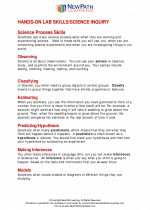 Hands-on Lab Skills/Science Inquiry - 3rd grade
Hands-on Lab Skills/Science Inquiry - 3rd grade  Worksheet/Answer key
Worksheet/Answer key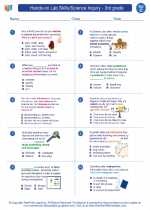 Hands-on Lab Skills/Science Inquiry - 3rd grade
Hands-on Lab Skills/Science Inquiry - 3rd grade  Worksheet/Answer key
Worksheet/Answer key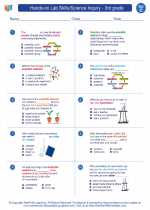 Hands-on Lab Skills/Science Inquiry - 3rd grade
Hands-on Lab Skills/Science Inquiry - 3rd grade  Worksheet/Answer key
Worksheet/Answer key Hands-on Lab Skills/Science Inquiry - 3rd grade
Hands-on Lab Skills/Science Inquiry - 3rd grade  Worksheet/Answer key
Worksheet/Answer key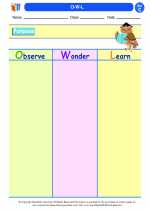 O-W-L
O-W-L  Vocabulary/Answer key
Vocabulary/Answer key Hands-on Lab Skills/Science Inquiry - 3rd grade
Hands-on Lab Skills/Science Inquiry - 3rd grade  Vocabulary/Answer key
Vocabulary/Answer key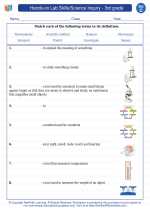 Hands-on Lab Skills/Science Inquiry - 3rd grade
Hands-on Lab Skills/Science Inquiry - 3rd grade 

 Worksheet/Answer key
Worksheet/Answer key
 Worksheet/Answer key
Worksheet/Answer key
 Worksheet/Answer key
Worksheet/Answer key
 Worksheet/Answer key
Worksheet/Answer key
 Vocabulary/Answer key
Vocabulary/Answer key
 Vocabulary/Answer key
Vocabulary/Answer key

The resources above cover the following skills:
Science as Inquiry and Process: A student should understand and be able to apply the processes and applications of scientific inquiry. A student who meets the content standard should:
Develop an understanding of the processes of science used to investigate problems, design and conduct repeatable scientific investigations, and defend scientific arguments.